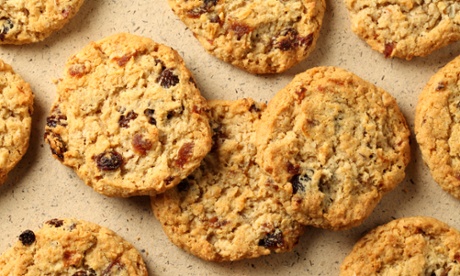This guy is an arts/law student at Sydney University and he does a terrific job of crystallizing the issue… recognised in him winning the Wentworth Prize. Good on him.
- http://sydney.edu.au/news/84.html?newscategoryid=1&newsstoryid=12895
- http://www.theguardian.com/commentisfree/2014/jan/13/obesity-cannot-be-controlled-through-personal-responsibility-alone
Obesity cannot be controlled through personal responsibility alone
Policymakers have invested in the exhausted, glib explanation that maintaining nutritional health is a matter of personal and parental responsibility. But is it?
McDonald’s cookies have an energy density comparable to hydrazine. Hydrazine is a rocket fuel used to manoeuvre spacecraft in orbit. It was astonishing, then, to watch a small child graze through two boxes of the desiccated biscuits in one sitting. His parents watched on, preoccupied with their own colossal meals: a noxious amalgam of meat, grease and sugar.
The prime minister, once our federal health minister, has explained his attitude. “The only person responsible for what goes into my mouth is me,” he said, “and the only people who are responsible for what goes into kids’ mouths are the parents”. The Gillard government agreed, ignoring recommendations produced by its own preventative health taskforce to tax unhealthy foods and eliminate junk food advertising directed at children.
Policymakers have invested in the exhausted, glib explanation that maintaining nutritional health is a matter of personal and parental responsibility – a corporate defence strategy adapted from the tobacco and alcohol industries. By implication, obesity is the result of individualirresponsibility: poor dietary choices, idle lifestyles, questionable parenting, or inadequate resolve.
Intuitively, it is easy to understand the political appeal of this doctrine. It conforms to cultural stereotypes, that “fat people” are slothful and indolent. Moreover, assuming collective responsibility for obesity and diabetes would likely require highly invasive disincentives like sugar or beverage taxes. Policymakers are eager to avoid the political liability associated with these proposals.
But this “personal responsibility” paradigm is troubling. First, it reflects popular indifference to the obesity epidemic. It is properly called an epidemic. Over 63% of Australian adults are overweight or obese. A fifthof all cancer deaths in the US are attributable to obesity. A quarter of the world population will likely acquire type 2 diabetes, while diabetes sufferers constitute two-thirds of all the deaths caused by cardiovascular disease. Globally, abnormal body mass index accounts for 23% of disability-adjusted life-years.
And if the number of sufferers continues to grow, children born today will enjoy shorter life expectancies than both their parents and grandparents.
Yet numbers make no sense unless they are properly communicated. Both obesity and type 2 diabetes are deeply human tragedies, but that is yet to register among the public and policymakers. They are tragedies that happen to “other people”, after a seemingly predictable descent into sedentary living and poor eating. Neither disease has the terrifying arbitrariness of cancer, nor the abruptness of a sudden heart attack – neither seems to warrant the same commitment to prevention.

Australians, for instance, remain acutely aware of the causal links between smoking and lung cancer or emphysema. Anti-smoking campaigns here are intensely visual and heavily funded. Comparable anti-obesity campaigns receive a third of the funding. Obesity is substantially lower as a preventative health priority.
Second, the personal responsibility doctrine allows government and industry to play an interminable game of pass-the-parcel with obesity control. At its most basic, obesity develops when a person’s energy consumption exceeds their energy expenditure. Commercial interests are best served by preserving the rate of consumption, and instead appealing to exercise and sport. “Think. Drink. Move.” intones Coca-Cola. “Confectionery is designed to be enjoyed,” writes Cadbury, “as part of a balanced diet and active lifestyle.”
Central, then, to the corporate responsibility mission is a selective emphasis on physical activity over diet, and a denial of the good food/bad food dichotomy. Blame is deflected instead onto the consumer. The CEO of Coca-Cola, Muhtar Kent, provides a typical illustration of this disingenuous, faux-conscientious marketing. “Obesity is a serious problem. We know that,” he silkily conceded. “And we agree that Americans need to be more active and take greater responsibility for their diets.”
So policymakers are stuck in a trap of industry’s design. Through the personal responsibility conceit, the debate over tackling obesity has been reduced to a simplistic binary: consumption control versus the promotion of sport and exercise.
It is a neat and digestible expression of the basic obesity problem, but it lazily defers some crucial questions. Consumption is the half of the obesity equation which has the greatest effect, and over which we have the most control. But governments have been caught up in the food politics of “energy-in-energy-out” without asking why 10% of the Australian population visits McDonald’s every day despite school curriculums saturated in dietary education, why Indigenous communities suffer disproportionately high rates of obesity and diabetes, or why ultra-processed foods are cheaper than healthy alternatives.
Clearly, understandings of personal responsibility will play an important role in any obesity control regime. Eliminating it entirely is unhelpful, and would only sustain the worn cliché that obesity is an exclusively genetic problem, to be cured rather than prevented.
Yet a country does not get fat for lack of responsibility. That cannot explain the rapid growth or severity of the obesity-diabetes epidemic. It is a caricature of the complex factors which influence the lifestyle patterns of individuals, and it fails to address the roots of overconsumption: cost of living, manipulative marketing, nutritional misinformation and – often overlooked – simple palatability.
Australia is the muffin top of Asia, and it is killing our citizens. Dispensing with the fiction of personal responsibility is the first step to a truly holistic solution – one which finds an appropriate balance between education, industry self-regulation, and firm government intervention.








